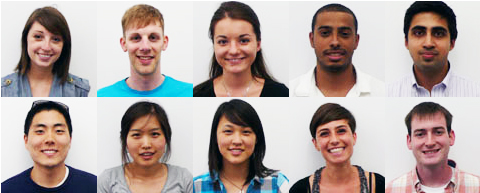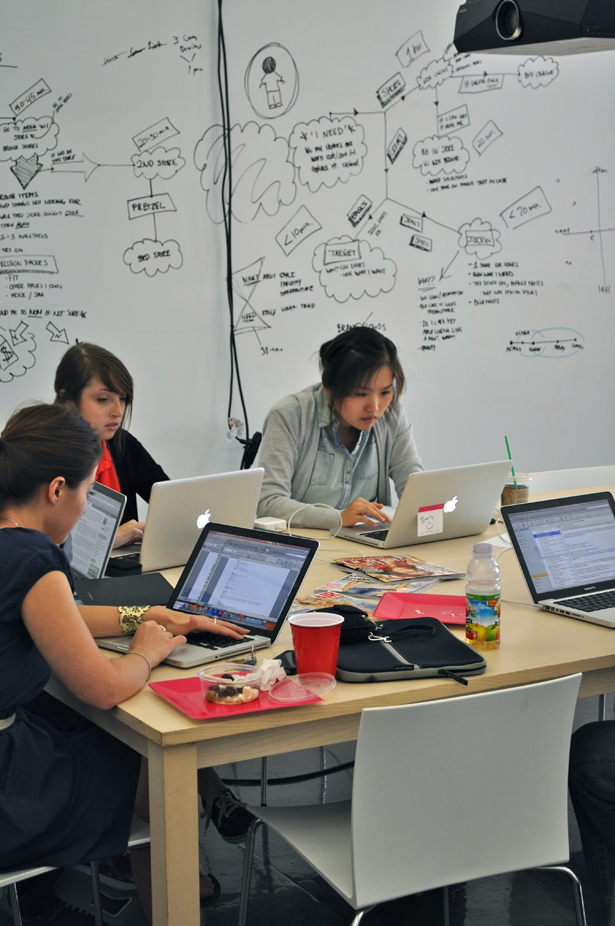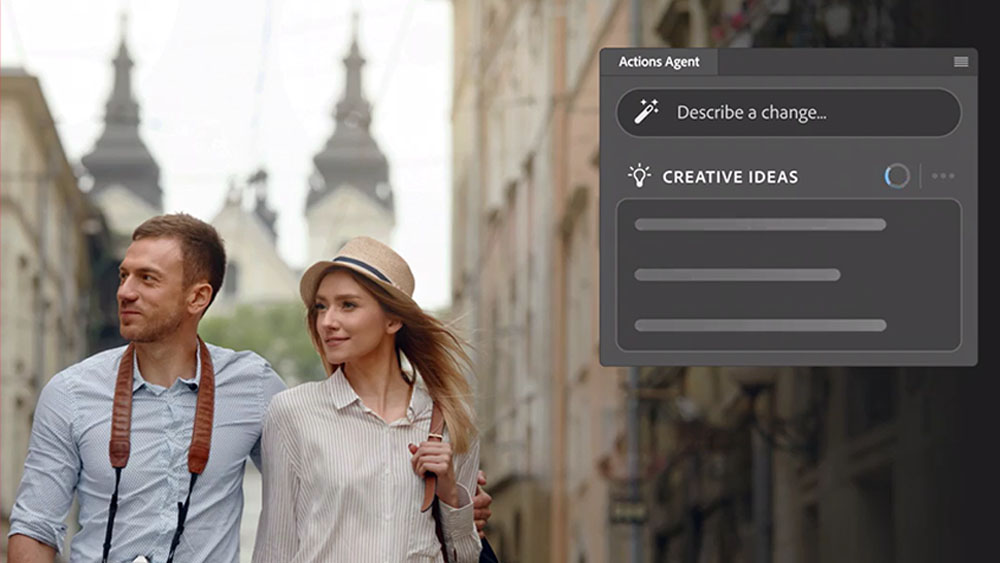The birth of the HUGE UX school
Michal Pasternak, partner (user experience) at HUGE, explains how the agency developed a training program for prospective interaction designers and how it changed the company
At HUGE, user experience is at the heart of everything we do for our clients – regardless of someone’s title or the role they play on a team. At the outset of every project, we talk directly to users and watch them interact with existing products to understand how we can better meet their needs. We dive into the analytics to uncover pain points and during the design process we repeatedly test designs with users. Our ultimate goal is to deliver real business value to our clients and make people’s lives better by giving them easier, faster, and more delightful experiences.
As the scale of our projects and our business has grown significantly over the last few years, the need for more and more specialist interaction designers (IDs) became a pressing concern. And as we reflected on how to meet our own resourcing needs, we had an insight about our own company.
Many of our most successful employees are home grown; they started out pretty green with lots of potential and learned by doing. But while training people on the job worked well for us in the past, we realised it was taking too long for new IDs to get a holistic understanding of both our work (meeting business goals, working through technical constraints, and everything in between) and HUGE’s working style.
This, coupled with an incredibly competitive environment for recruiting talent, led us to the conclusion that if we wanted the best IDs in the world on our projects, we were going to have to create them ourselves. Our vision was to attract, foster, and grow the best emerging ID prospects in the world, and so the HUGE UX School was born.
Developing the curriculum
We knew that we didn’t just want to teach process and rules – we wanted to create a challenging experience that would teach students how we frame problems and then solve them through lots of hard work, feedback, iteration and collaboration. We put a lot of energy into developing the curriculum. Researching various training programs, gathering input from HUGE’s UX team and other departments on what makes a great ID, we tested out units with the team, and we put a lot of thought into the learning experience itself.
The result was HUGE UX School, an intense, hands-on, three-month summer training program which started experimentally this June at HUGE’s headquarters in Brooklyn, New York.
The first class of students consisted of 10 trainees from across the world, selected from hundreds of international applicants. Our recruitment team spent months travelling to schools (some with active HCI/UX programs and some without) to evaluate top talent, looking for design savviness, a proactive attitude, a hunger to learn, and a passion for what we do. Selected trainees hailed from the United States, Korea, Italy, Dominican Republic and Germany, with backgrounds in industrial, graphic, and interactive design as well as architecture and human-computer interaction.
Get the Creative Bloq Newsletter
Daily design news, reviews, how-tos and more, as picked by the editors.

The UX School program itself began with a two-week crash course on HUGE and ID fundamentals. On day one, we introduced students to HUGE and how we work and welcome them with a party attended by the entire UX team.
Then we got serious – a deep dive into scenarios, structure, and wireframes. The school’s curriculum consists of a mix of lectures, mini-exercises, and design reviews led by members of HUGE’s UX team and beyond. The bulk of the students’ time is spent creating.
Structured projects
For the rest of the summer, students worked in teams on real – and important – projects. The projects were structured to simulate what it's like to work at HUGE: there are "clients", collaboration with other disciplines, a full discovery phase including first-hand user research and deadlines that would move around without much warning.
Throughout the summer, trainees met and learned from people across all disciplines at HUGE, including our CEO and partners. Over the course of the program, students got detailed feedback and evaluation by their managers and other members of the UX team so they could improve in real time.

By the end of the program, most students had mastered the skills a successful ID needs to work at HUGE, understand what it's like to work here, and, most importantly, became better problem solvers and designers.
Integrated learning
Given how important culture is to us at HUGE we also wanted to ensure that trainees were fully integrated into the larger UX team. They got a manager to guide them, a mentor to help them adjust, and joined regular UX meetings.
It was also important to us that they didn’t work in a vacuum. We encouraged the trainees to explore all that New York has to offer and organised group outings – from baseball games to a visit to MoMA, a tour of Manhattan and company barbeques. Students even conducted first-hand user interviews out on the city streets.
Students weren’t guaranteed a job at the end of the summer – if they wanted one, they would have to earn it. But the trainees blew us away with their entrepreneurship, drive and evolution through the summer – both as designers and as individuals. And when the inaugural class graduated in mid-August, nine out of 10 trainees were offered full-time positions, including four students who were returning to school.
What we learned
While the UX School was a valuable experience for the trainees, we also learned a great deal as a company. For the UX department specifically, developing the program helped us to form a more cohesive vision of how we approach each task and, more importantly, what we value most in our project work and employees.
I’m a firm believer that to do something well, you should study it, do it, and teach it. The program enabled lots of UXers to teach and mentor – and to get a change from project work. The whole office rallied around the program – people pitched in on a moment’s notice and showed real dedication to the trainees’ success.
We quickly realised that other departments at HUGE and even our existing employees might benefit from similar programs in their respective disciplines. In 2012, HUGE will not only be training students in UX, but in design, technology, and project management as well.
The three most important things we learned:
- Do the minimum possible to make it amazing. This is our design philosophy as a company and it was definitely true in this case. We launched a very ambitious program but there were still some pieces missing and that was okay. We prioritised the most important things and did them well. Now, we have a solid base to start improving upon.
- Make adjustments on the fly. While the program was running, we noticed things that took too long or caused confusion and we changed them as we went. I believe that the program evolved right along with the trainees. It really helped that we set expectations with the trainees up front that, just like in agency life, things would undoubtedly change.
- Give the students freedom to succeed. Time and time again, we put the onus of working things out on the students. How would they work together as a team? How could they improve their research conclusions? What new ideas and designs could they come up with? What did they want to present at the end of the program? Sometimes this was born out of necessity and sometimes by design, but it was a great reminder to us that when you challenge smart, driven people to step up and deliver, they always do. And sometimes they do it far better than you could have – which is incredibly rewarding to see.
HUGE is taking applications for project management, technology, user experience, and
visual design. If you want to join next year's school, you can apply at hugeinc.com/careers.

Thank you for reading 5 articles this month* Join now for unlimited access
Enjoy your first month for just £1 / $1 / €1
*Read 5 free articles per month without a subscription

Join now for unlimited access
Try first month for just £1 / $1 / €1
The Creative Bloq team is made up of a group of design fans, and has changed and evolved since Creative Bloq began back in 2012. The current website team consists of eight full-time members of staff: Editor Georgia Coggan, Deputy Editor Rosie Hilder, Ecommerce Editor Beren Neale, Senior News Editor Daniel Piper, Editor, Digital Art and 3D Ian Dean, Tech Reviews Editor Erlingur Einarsson, Ecommerce Writer Beth Nicholls and Staff Writer Natalie Fear, as well as a roster of freelancers from around the world. The ImagineFX magazine team also pitch in, ensuring that content from leading digital art publication ImagineFX is represented on Creative Bloq.
